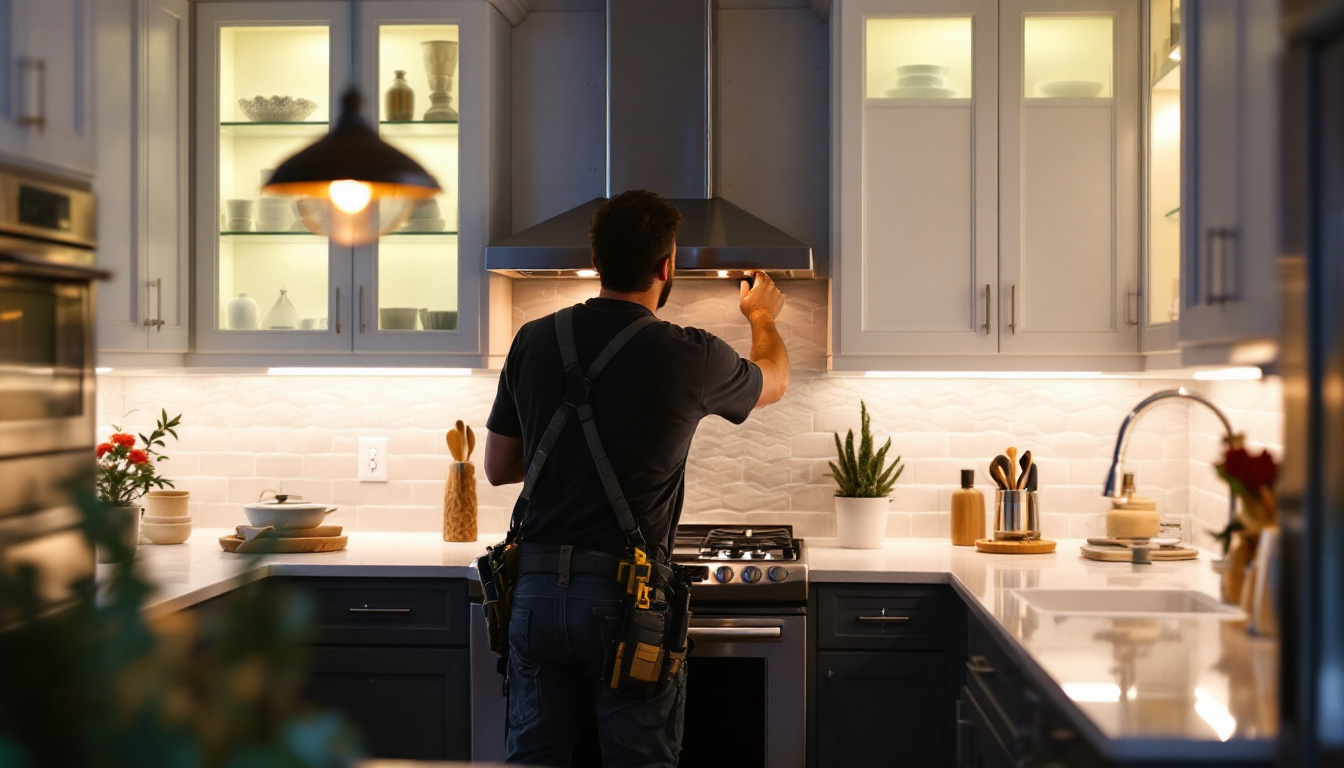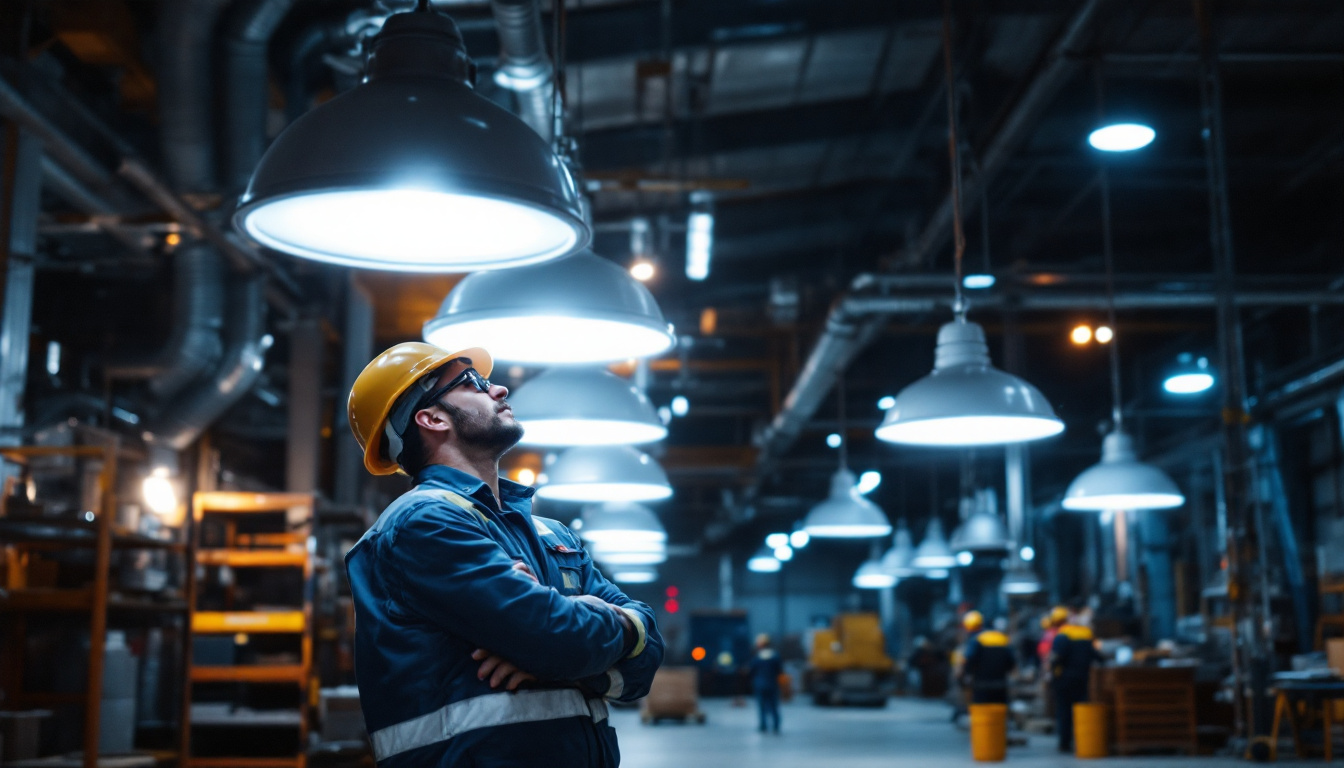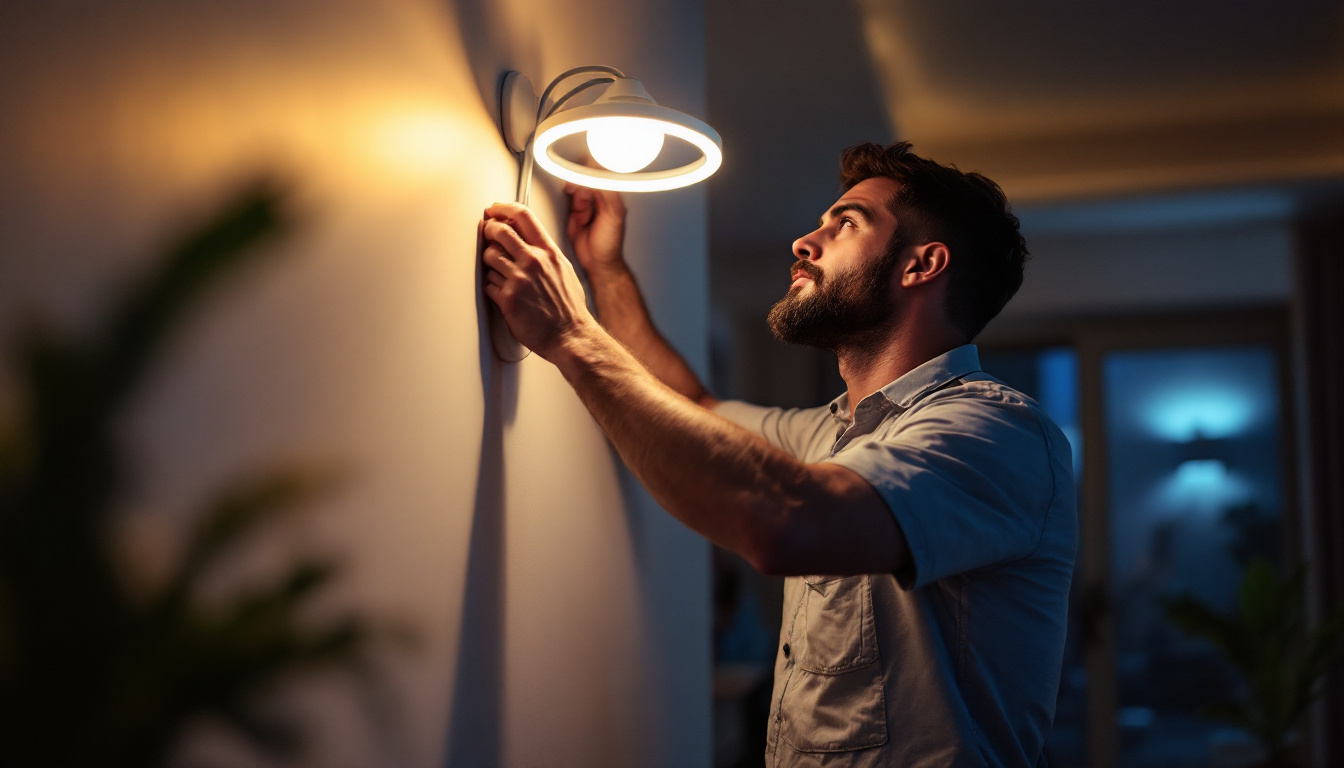
Lighting plays a crucial role in enhancing the functionality and aesthetic appeal of spaces, particularly in cabinetry. For lighting contractors, understanding the nuances of in-cabinet lighting is essential for delivering high-quality installations that meet client expectations. This article outlines best practices for lighting contractors to ensure optimal results in in-cabinet lighting projects.
In-cabinet lighting refers to the illumination installed within cabinets, shelves, or other enclosed spaces. This type of lighting not only enhances visibility but also adds a decorative element to the cabinetry. It can be used in various settings, including kitchens, bathrooms, and living areas, where it serves both functional and aesthetic purposes. The right in-cabinet lighting can transform a mundane storage area into a visually appealing feature, making it an essential consideration in modern interior design.
Contractors must recognize the different types of in-cabinet lighting options available, such as LED strips, puck lights, and recessed lighting. Each type has its advantages and specific applications, making it vital for contractors to assess the needs of each project carefully. For instance, in a kitchen, where visibility is crucial for food preparation, a combination of different lighting types may be employed to ensure that every corner is well-lit while also creating an inviting atmosphere.
LED strip lights are popular for their versatility and ease of installation. They can be cut to size and are available in various colors and brightness levels. This adaptability allows homeowners to customize their lighting to suit their mood or occasion, whether it’s a soft glow for a dinner party or bright light for a practical task. Puck lights, on the other hand, provide focused illumination and are ideal for highlighting specific areas within cabinets, such as displaying fine china or showcasing decorative items. Their compact size makes them easy to install in tight spaces, ensuring that even the smallest cabinets can benefit from enhanced lighting.
Recessed lighting offers a sleek look, as it is installed flush with the cabinet surface, creating a clean and modern appearance. This type of lighting is particularly effective in minimalist designs where excess fixtures could detract from the overall aesthetic. Choosing the right type of lighting depends on the cabinet design, the intended use of the space, and the overall aesthetic desired by the client. Additionally, factors such as energy efficiency and maintenance should also be considered, as LED options tend to consume less power and have longer lifespans compared to traditional incandescent bulbs. Understanding these options allows contractors to make informed recommendations that align with their clients’ visions, ensuring that the final result is both functional and visually appealing.
Effective planning and design are critical components of successful in-cabinet lighting installations. Contractors should engage with clients to understand their preferences, needs, and how they intend to use the space. This initial conversation sets the foundation for a tailored lighting solution. By discussing the specific activities that will take place in the cabinets, whether it’s displaying collectibles, storing kitchenware, or organizing office supplies, contractors can better align their lighting strategies with the intended use, ensuring that the final result is both functional and aesthetically pleasing.
Consideration of the cabinet layout, color, and materials is also essential. Light colors can enhance the brightness of a space, while darker colors may absorb light, requiring more powerful fixtures. Additionally, understanding the function of the cabinet—whether for storage, display, or both—will influence the design choices made. For instance, display cabinets may benefit from accent lighting to highlight specific items, while storage cabinets might require more uniform illumination for practicality. The choice of materials, such as glass or wood, can also impact how light interacts within the space, further emphasizing the need for a thoughtful approach to design.
Before installation, contractors should conduct a thorough assessment of the space. This includes measuring the dimensions of the cabinets and identifying any obstacles that may affect the installation process. It’s also important to consider the existing electrical infrastructure and whether additional wiring or outlets are necessary. Evaluating the surrounding environment, including wall colors and nearby furnishings, can provide insights into how light will reflect and diffuse throughout the area, which is crucial for achieving the desired ambiance.
By taking these factors into account, contractors can create a comprehensive lighting plan that addresses potential challenges and ensures a smooth installation process. Additionally, discussing the client’s preferences for control options, such as dimmers or smart home integration, can enhance the functionality of the lighting system. This proactive engagement not only helps in crafting a more personalized experience but also fosters a sense of collaboration between the contractor and the client.
A well-thought-out lighting layout is essential for achieving the desired effect. Contractors should consider the placement of fixtures, the direction of light, and the overall brightness required for the space. Lighting should be evenly distributed to avoid dark spots and ensure that all areas of the cabinet are adequately illuminated. The use of layered lighting, which combines ambient, task, and accent lighting, can create depth and visual interest, making the cabinets not just functional but also a focal point of the room.
Using design software or tools can help visualize the layout and make adjustments before actual installation. This proactive approach can save time and resources, leading to a more efficient project execution. Furthermore, incorporating adjustable fixtures can provide flexibility, allowing clients to modify the lighting as their needs change over time. By considering the long-term usability of the lighting design, contractors can ensure that the installation remains relevant and effective, adapting to the evolving preferences of the client.
Once the planning and design phases are complete, the installation process begins. Adhering to best practices during installation is crucial for ensuring safety, functionality, and longevity of the lighting system.
Contractors should follow manufacturer guidelines for each lighting fixture, as these instructions provide essential information regarding wiring, mounting, and safety precautions. Proper installation not only enhances the performance of the lighting but also minimizes the risk of future issues.
Electrical safety is paramount in any lighting installation. Contractors must ensure that all wiring is compliant with local codes and regulations. This includes using the appropriate gauge of wire, securing connections, and ensuring that all fixtures are properly grounded.
Additionally, it’s essential to consider the power supply. If the lighting system is extensive, it may require a dedicated circuit to prevent overloading existing circuits. Planning for future upgrades or expansions can also be beneficial, allowing for easier modifications down the line.
The placement and positioning of fixtures significantly impact the effectiveness of in-cabinet lighting. Fixtures should be strategically located to highlight key features, such as decorative items or shelving. For instance, puck lights can be installed to shine directly on specific objects, while LED strips can be placed along the edges of shelves for a more ambient glow.
Contractors should also consider the height and depth of the cabinets when positioning fixtures. Ensuring that lights are not obstructed by shelves or cabinet doors is crucial for maximizing illumination and achieving the desired aesthetic effect.
In-cabinet lighting can be enhanced with the right control systems, allowing clients to adjust brightness and create different moods. Options such as dimmers, smart lighting systems, and motion sensors can add functionality and convenience to the lighting setup.
Contractors should discuss control options with clients to determine their preferences and how they plan to use the lighting. For example, a kitchen cabinet may benefit from a dimmer switch to adjust the lighting based on the time of day or activity, while display cabinets may require more consistent illumination.
Smart lighting solutions are becoming increasingly popular, offering users the ability to control their lighting remotely via smartphones or voice-activated devices. These systems can be programmed to adjust automatically based on time or occupancy, providing both convenience and energy efficiency.
Integrating smart lighting into in-cabinet installations can elevate the overall user experience, making it an attractive option for clients looking for modern solutions. Contractors should stay informed about the latest smart technologies to provide clients with the best options available.
Proper maintenance is essential for ensuring the longevity and performance of in-cabinet lighting systems. Contractors should educate clients on how to care for their lighting, including cleaning fixtures and checking for any signs of wear or damage.
In the event of issues, contractors should be prepared to troubleshoot common problems. This may include flickering lights, dimming, or complete outages. Understanding the potential causes of these issues, such as faulty wiring or burned-out bulbs, allows for quicker resolutions and minimizes downtime for clients.
Encouraging clients to conduct regular inspections of their lighting systems can help identify potential problems before they escalate. Simple checks, such as ensuring that all bulbs are functioning and that there are no visible signs of damage, can go a long way in maintaining the integrity of the installation.
Contractors can offer maintenance packages or services to assist clients in keeping their lighting systems in optimal condition. This not only fosters a positive relationship with clients but also opens opportunities for future projects and referrals.
The lighting industry is constantly evolving, with new technologies and design trends emerging regularly. For lighting contractors, staying updated with these changes is essential for providing clients with the best options and solutions.
Attending industry trade shows, participating in workshops, and subscribing to relevant publications can help contractors stay informed about the latest advancements. This knowledge can be leveraged to enhance service offerings and maintain a competitive edge in the market.
As sustainability becomes a priority for many clients, contractors should consider incorporating energy-efficient lighting solutions into their offerings. LED lighting, for example, consumes significantly less energy than traditional incandescent bulbs, making it a more environmentally friendly choice.
Contractors can also educate clients on the benefits of sustainable lighting practices, such as using timers or smart controls to reduce energy consumption. By promoting eco-friendly solutions, contractors can appeal to a growing demographic of environmentally conscious consumers.
In-cabinet lighting presents unique opportunities for lighting contractors to showcase their skills and creativity. By following best practices in planning, installation, and maintenance, contractors can deliver exceptional results that meet and exceed client expectations.
Staying informed about the latest trends and technologies will not only enhance service offerings but also foster long-term relationships with clients. With a focus on quality, safety, and innovation, lighting contractors can thrive in the dynamic world of in-cabinet lighting.
Ready to elevate your in-cabinet lighting installations with the finest products on the market? Look no further than LumenWholesale, where we provide lighting contractors with spec-grade lighting solutions at unbeatable wholesale prices. Our commitment to quality, affordability, and convenience ensures that you have access to a vast selection of premium lighting that meets the highest industry standards. Say goodbye to inflated markups and hello to hassle-free bulk buying with free shipping. Take the next step in enhancing your service offerings and visit LumenWholesale for Wholesale Lighting at the Best Value.

Discover the essential insights lighting contractors need about vapor tight lighting.

Discover essential strategies and expert tips for lighting contractors to master electric cords, enhance project efficiency, and ensure safety.

Discover the essential insights into fluorescent light grates and louvers with answers to common questions from lighting contractors.

Discover why dimmable LED lights are revolutionizing the lighting industry and why contractors should prioritize them in their projects.